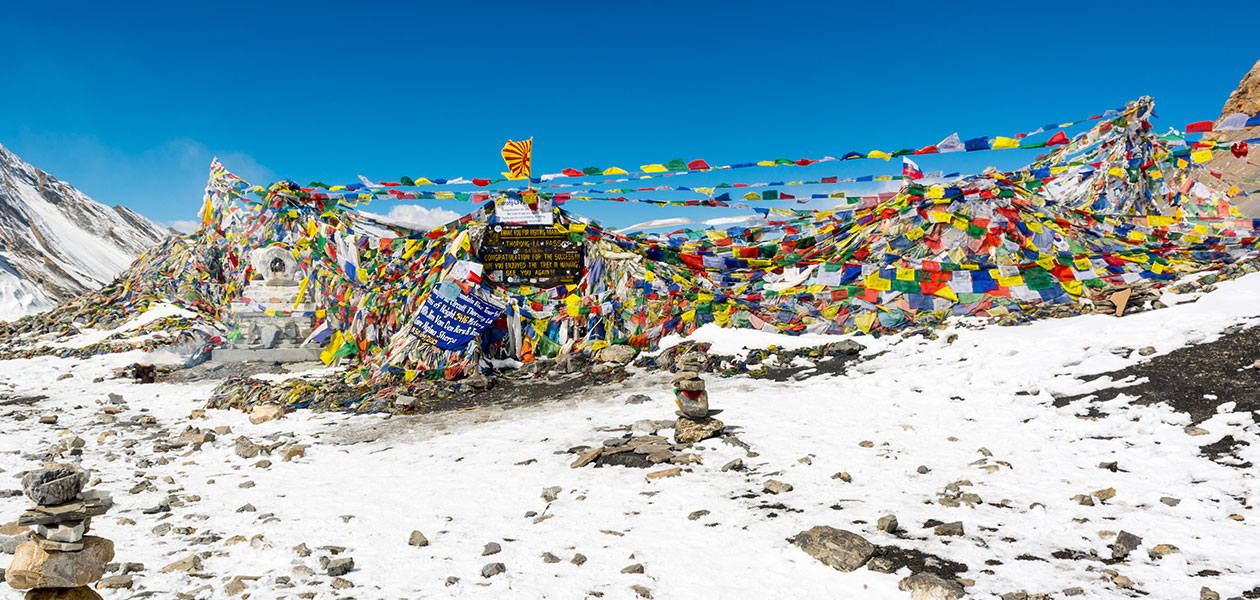Have you ever heard the proverb, “Nature reveals its grandeur in the right season?” This signifies that there is a certain time of the year that weaves a unique magic of spectacle that will make you pause to witness it. When it comes to trekking, the autumn and spring seasons are considered ideal seasons to explore all of Nepal. However, October stands out among them, with a seamless blend of weather, panoramic views, and festival delights. So, describing Annapurna Circuit Trek in October as encountering the masterpiece in its most captivating form won't be wrong.
When the core month of autumn, October, arrives, it spreads the unique charm of nature in various forms, including pleasant weather, foliage hues, and majestic mountain vistas. Encountering the diverse flora and fauna of Annapurna Sanctuary alongside the rambling of other fellow trekkers carries its own fun.
Subsidizing the monsoon and making the winter wait, October transforms the Annapurna Circuit into an iconic destination of awe-inspiring natural wonders and religious essences. Traversing through different climatic zones in one of the mainstream trekking routes during October will undoubtedly make you feel as if heaven has left its small part on Earth, heightening your anticipation and desire to visit.
This was just an imaginative overview of the Annapurna Circuit Trek in October. The real deal is within the article, so stay with us till the end of this blog to find the answer to your every question.
Annapurna Circuit Trek in October - Trek Overview

Your Annapurna Circuit Trek in October begins with a scenic drive to mid-Western Nepal. Passing the dense forest, meadows, and settlement areas, you will arrive at Syange (1100 m). Leaving the Marshyangdi River behind, you will follow the route of Jagat and Dharapani(1920 m )
Passing by the winding trails full of rhododendrons and pine, you will incline towards Chame(2670 m), the headquarters of Manang district. Now, slowly gaining elevation from Chame, you will move towards upper Pisang(3230 m) and finally Manang(3450 m), where you will be acclimatizing for a day. Going on short hikes to explore side highlights like Milerepa Cave, Kicho Lake, Chongkar View Point, etc., will make your acclimatizing day more exciting.
Meandering through the meadows of Yak Kharka(4110 m), you will start to take a steep ascent from Thorung La Phedi to cross the formidable mountain Thorung La Pass(5416 m). Descending from the pass, you will make your way towards holy Muktinath(3800 m), where you can take a spiritual bath in two kundas and 108 water sprouts.
Driving down to Kali Gandaki River Valley, you will pass Jomsom(2715 m )and Marpha (2670 m) and reach the natural hot spring Tatopani. Walking through the forest of rhododendron and pine, you will arrive at Ghorepani(2860 m), from where you will walk on the stony staircase towards Poon Hill(3210 m) to witness the amazing sunrise over the Annapurna massifs, Mt. Machhapuchhre, and other surrounding peaks. You will then make your way past Ulleri to finally reach Nyapul. Taking the scenic ride from Pokhara(860 m) to Kathmandu (1400 m), you will end your Annapurna Circuit Trek in October.
Read also: Annapurna Circuit Trek in September
What is Temperature and Weather Like in Annapurna Circuit in October

Being one of the prominent months for trekking, the Annapurna Circuit Trek in October is characterized by cozy and mild temperatures. The stable weather significantly boasts an ideal trekking atmosphere in the Annapurna region.
The temperature in the lower elevation can range between 12 to 27 degrees Celsius. At the same time, the temperature will decrease as you slowly ascend the altitude. So, the temperature in the higher elevations can hover around 4 to 8 degrees Celsius. The morning and night will be quite chilly and breezy but not harsh cold. The temperature in the morning and night can drop down to 7 degrees Celsius, while in higher elevations, it can hit -3 degrees Celsius with ease.
Why Annapurna Circuit Trek in October
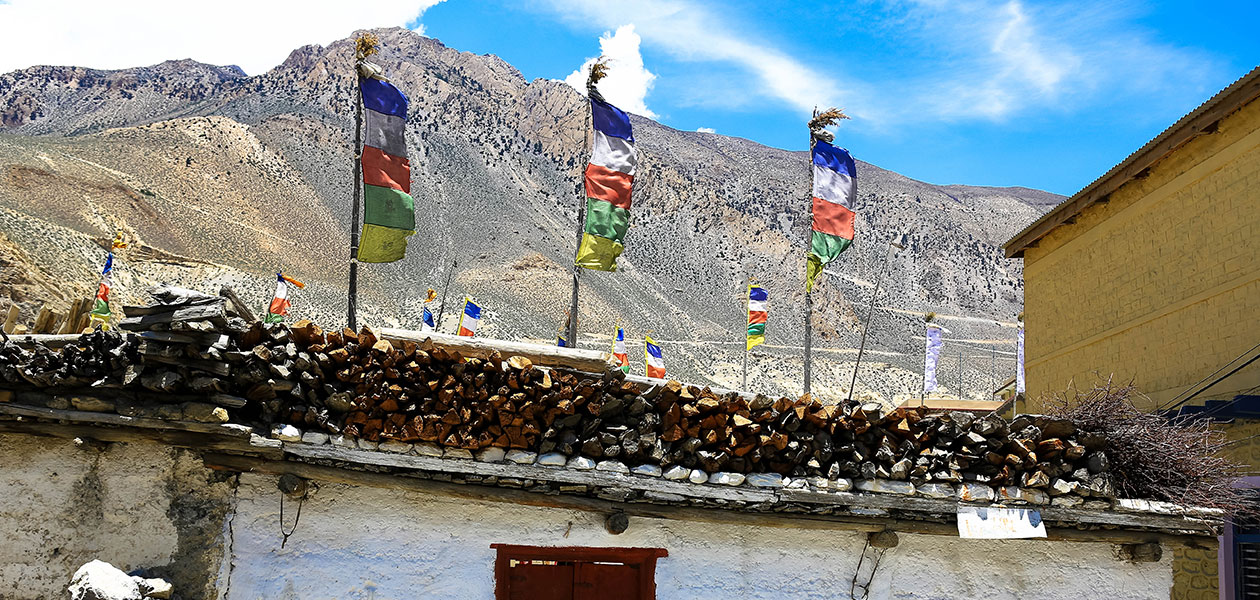
Festival Delights
Being one of the core months for festivals in Nepal, October celebrates many festivals like Dashain, Tihar, Chaath, Mani Rimdu, etc. The biggest festival of Nepal Dashain, which lasts for 15 days, is the celebration of victory over evil. During these festivals, people who are away from their homes come back and reunite with their families so that you can see the hustle and bustle of people in remote villages and settlement areas.
Moreover, these festivals allow you to witness the cultural processions and participate in their celebration through dance or other ceremonies. At the same time, you can cleanse your palate with delectable regional and traditional Nepali cuisines like Sel roti, Fini roti, etc. Hence, the cultural prospects in this month will give you insights into unique cultures and traditions, multiculturalism, and linguistic exchange.
Clear and Crisp Mountain Views
The incredible mountain views during Annapurna will never fail to amaze you. With less moisture in the air after losing the complete grip of monsoon season, there will be fewer or no clouds in the sky. As you progress your Annapurna circuit trek, the distant views of Annapurna massifs, Nilgiri, Dhaulagiri range, Chulu Peak, Macchapuchre, Lamjung Himal, and many more get closer.
Moreover, the white snow glistening over the mountains, creating a constant blue sky, is truly a delight to your eyes. Witnessing such astonishing mountain views throughout the journey will make you excited and keep you in high spirits.
Enchanting Landscapes
The monsoon rain rejuvenates the nature of the Annapurna Region by nourishing the forests and adding volume to waterfalls and streams. The forest and meadows will have a unique combination, as some parts of the region will have lush vegetation while others are transitioning by vibrant autumn hues. These different shades of color in the region will attract your eyes and create a keen interest in exploring more.
Lively Trail
Autumn is preferable for trekkers and adventure enthusiasts to embark on any adventure, and Annapurna Circuit Trek is no any exception. Among the months of autumn( September, October, and November), October is more preferable as pre-monsoon is far left behind, while winter has a long way to go. So, the trails of the Annapurna Circuit Trek in October will be filled with trekkers, porters carrying luggage, mules walking back and forth, and traders carrying on their trades. Moreover, teahouses will also be filled with trekkers so you can connect with them by telling them your interesting stories during dinner.
Dry Trails
There is very little chance of precipitation during October, so the trails will remain dry. In your Anapurna circuit trek, you will traverse steep ups and downs, ravines, rugged terrain, mountain passes, and other dramatic landscapes. So meandering these paths will be quite taxing, but dry trails will help you feel comfortable and have better traction.
Is Annapurna Circuit Trek the Right Choice for Me?

Annapurna Circuit Trek is considered as a moderate trek with no technical difficulties. The trek circles around the laps of mountains in rugged landscapes where you have to traverse dense forests, meadows, suspension bridges, streams, formidable Himalayan passes and glacial moraines.
So, it is important to have reasonable physical fitness and mental resilience to complete this trek. The completion percentage of this trek is also high, with 98% to 100% of people successfully creating a lifetime memory. Likewise, prior trekking experience is not required for this trek, so even novice trekkers can embark on this Annapurna Circuit Trek. However, this journey can be taxing and mentally exhausting for novice trekkers without physical and mental preparation.
Simultaneously, if you have any health conditions related to the lungs, heart, and joints, it is recommended to consult with your doctor first. Furthermore, children under the age of 16 require guardian permission to embark on this thrilling journey.
What Are Some Difficulty Factors of Annapurna Circuit Trek in October?
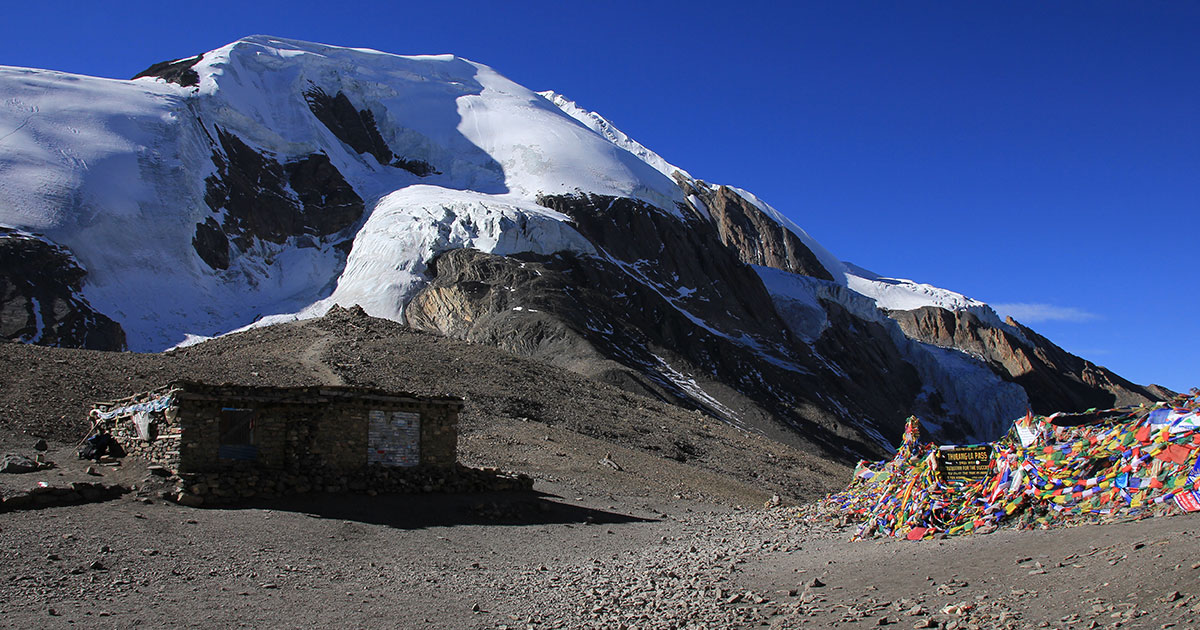
Being one of the mainstream trekking routes, Annapurna Circuit Trek takes you across the fascinating landscapes and exhilarating cultural trails. Although the experience is certainly remarkable in this mainstream route, you shouldn’t underestimate its challenges as well. There are few factors that you have to make note about during your Annapurna Circuit Trek in October.
High altitude
During the Annapurna circuit trek in October, you will slowly incline from Chame(2670 m) and push yourself to the highest point of the trek at Thorung La Pass(5416 m). You will gain significant altitude and spend most of your days above 3000 m. So, there are high chances to fall prey of altitude sickness while completing the trek. Hence, it becomes necessary to acclimatize properly and let your body adapt with the atmosphere of high altitude.
Long Duration
It will take about 10 to 15 days to complete the Annapurna Circuit Trek. Moreover, you will have to cover approximately 160 km to 230 km, depending on the itinerary and highlights you choose. To cover such an extreme distance, you are required to walk about 6 to 8 hours per day. If you are a novice trekker without any prior experience, then this trek can be taxing for you. So reasonable physical fitness and enough preparation prior to the trek shall be made for a more convenient journey.
Finding Accommodations
Being one of the peak times of the year for trekking, most teahouses and lodges will be packed with trekkers, so finding accommodation can be quite hard. To avoid such accommodation problems, you can make advance bookings in these teahouses and inform them about your arrival.
Useful Considerations for Annapurna Circuit Trek in October

Get Insured by Travel Insurance
You are traveling to an unfamiliar place amidst the mountains and rugged terrains in a remote region, so getting insured by travel insurance is very important. Moreover, your insurance policy will be taken from a wise insurer and will cover all expenses, including medical bills, hospital expenses, air ambulance costs, and evacuation costs.
Taking an insurance policy will mitigate your financial risk and distribute your financial burden to the insurer. Moreover, adding a cancellation clause to your policy is always recommended. Expenses like visa, flights cost, accomodation etc are of prepaid nature. In case you have to cancel your plan, then the policy can cover your loss and give you policy amount.
Carry Cash
Since Nepal is a cash-oriented country with digitalization just introduced a few years back, carrying functional currency is very necessary. Moreover, you are visiting the tranquil part of Nepal, so carrying cash and cask equivalents becomes more important when carrying out any transaction, whether it is paying for food or tipping your porters. Moreover, you can find ATMs only in major headquarters however these ATMs cannot be relied on due to logistic aspects. So it will be more useful if you withdraw cash when you have more access to these resources, like in Pokhara or Kathmandu. At the same time, the exchange rate fluctuates daily, so the rate you exchanged money yesterday may not be the same today.
Likewise, visa cards and master cards are accepted by some teahouses, but an additional 3% to 4% in charges will be added per transaction. Moreover, apart from Nepalese rupees, you can carry some exchangeable currency like pound sterling, dollars, euros, etc.
Choose wise Pacakge and Trekking Agencies.
One of the easiest ways to trek in Nepal is through trekking agencies like ours. Trekking agencies develop various packages for itineraries and highlights that meet your requirements. Your agency will manage most of your accommodation bookings, permits, etc. so that you can enjoy your journey with ease.
Therefore, you should choose a package with enough acclimatization days and choose a wise trekking agency that will cover most of your trekking aspect at a reasonable cost.
Acclimatize properly
As you ascend to higher altitudes, the air gets thinner with a lower oxygen percentage. Your body needs time to adapt to such oxygen levels, so acclimatization days are allocated in your itinerary. Our Annapurna circuit trek designed an acclimatization day at Manang before heading off to Thorung La Pass.
Stay Hydrated
Annapurna circuit trek is a long hour trek, so it is important to stay hydrated throughout the day. Make sure to intake 3 to 4 liters of water daily so that you can avoid altitude sickness. Usually, the water in the high Himalayan region is pure and clean, but bottled water is always available if you are not comfortable drinking it. Similarly, you can buy some water purification tablets and electrolytes to enhance your hydration approach.
Obtain Permits
You will walk on the trails under the care of the Annapurna Conservation Area Project, so you will need to obtain an Annapurna Conservation Area Permit. You can obtain this permit from the Tourism Board service center at Pokhara or the Nepal Tourism Board office in Kathmandu or the ACAP entry permit counter in Besisahar. This will cost you approximately about USD $25.
Gain Insights On:
Packing List
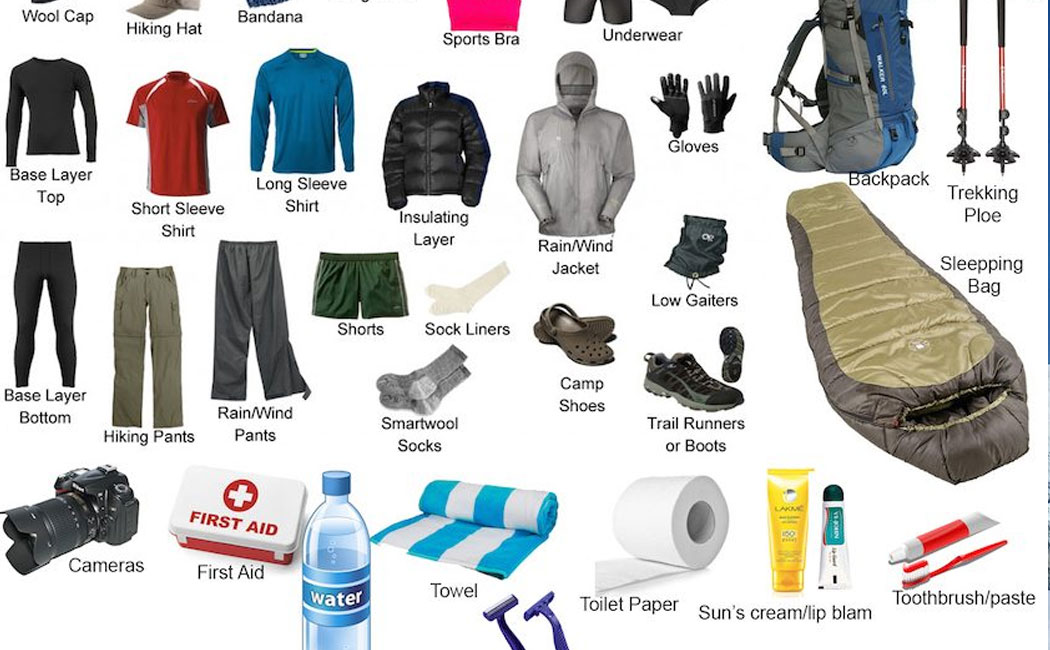
The packing list for the Annapurna circuit trek in October usually does not vary much from that for other times of the year since you have to be ready for all kinds of circumstances. However, you should always consider packing light by including the essential things that will be required during the trek. Moreover, a single porter will carry the luggage of two trekkers, which is about 15 to 25 kg. So excess luggage and equipment shall be carried by you in a backpack. Therefore, it is important to keep in mind a weight factor while packing.
If you are in confusion about your packing List and don't want to overlook the essentials, then you can use the given packing list as a checklist.
Clothes
- Gloves and mittens
- woolen hats and wide-brimmed sun hat
- Thermal layers
- full or half-sleeve t-shirts and shirts
- Trekking shorts and full pants
- Scarf or neck gaiters
- Windproof and waterproof trousers and jackets
- Fleece jacket
- Waterproof and windproof shell jackets
- Heavy down jacket
- Several pairs of undergarments
- Several pairs of socks
- Sports bra
- Convertible hiking shorts
Shoes
- Comfortable hiking boots
- Sports or trainer shoes
- Sandals, crock, or slippers are to be used at the teahouses.
- Ankle Support
Personal Hygiene and Toiletries
- Toothpaste, toothbrush
- facewash and body wash
- Hand sanitizer
- Sunscreen with high SPF, body lotion, and lip balm
- Soap, shampoo, deodorant, conditioner
- Quick dry towels, toilet paper
- Wet wipes and face towel
- Foot powder
- Personal medication (if any)
- Water purification solution or tablets
- Small first aid kit with all basic medications
Equipment
- Trekking poles,
- Duffle bag,
- packing sack
- Backpack
- daypack
- Sleeping bag (four seasonal sleeping bags recommended)
- Binoculars
- camera
- Headlamp with extra pair of batteries
- Power bank
- solar charger
- Universal charging cord
- Reusable water bottles and Thermos flask
- Card and board games
- Magazine, journal, pens
Useful Tips for Annapurna Circuit Trek in October
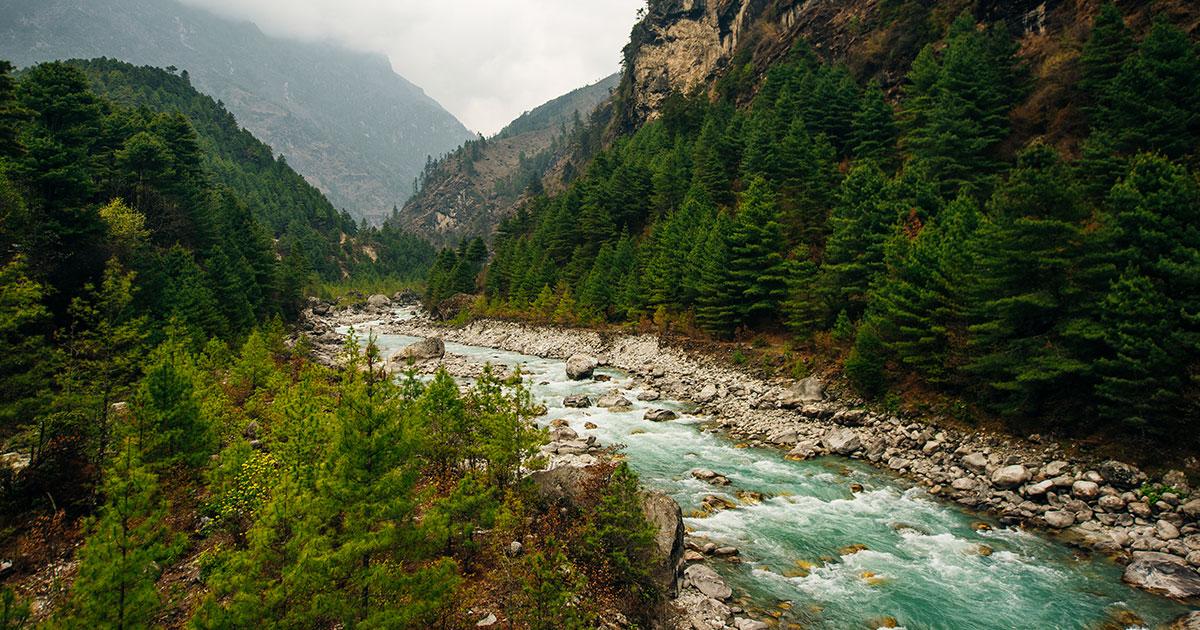
- Don't skip your meals, and if you don't feel like eating, try the force-feeding approach. Try to incorporate a balanced diet into your meal.
- Do not consume hard drinks and excessive amounts of tea and coffee during the trek. This will hinder your acclimatization process.
- Follow the instructions of guides and porters
- Learn some basic Nepali language
- Try to respect the culture and traditions of the region
- Trek map will always come in handy
- Pack light
- Take some basic medications with you
- Prepare yourself physically by doing some cardiovascular exercises to boost your stamina and increase your strength.
- Do not keep any unrealistic expectations about the trek

